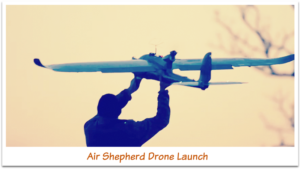Using AI-powered drones to catch poachers
The United Nations estimates that illegal wildlife trade worldwide could be worth $8 billion to $10 billion annually. The value of the ivory trade alone contributes about $1 billion.
For now, foot patrols and drone-based surveillance have not been effective at preventing poaching, and these efforts are labour-intensive and under resourced. One AI-based solution has already been built and tested, and it had some initial success in combating poachers, says a report on AI for social good by McKinsey Global Institute.
The SPOT system, built by researchers from the University of Southern California’s Center for Artificial Intelligence in Society and piloted by the organization Air Shepherd, automates the process of detecting poachers in infrared video feeds, freeing park rangers for other tasks and increasing the reliability of surveillance.
The solution uses image classification and object detection to find animals and poachers on infrared video captured by a drone at night. A convolutional neural network model is trained to recognize both poachers and animals despite their small size in the video feed.
Air Shepherd has reported some success in South Africa and plans for wider rollout in Botswana. In one area where as many as 19 rhinos were killed each month, there were no deaths for at least six months after the program was deployed.
 With more development, SPOT and similar solutions could guide drones autonomously, adjusting flight routes to track poachers and removing the need for highly trained pilots and systems operators in the more than 300 wildlife parks.
With more development, SPOT and similar solutions could guide drones autonomously, adjusting flight routes to track poachers and removing the need for highly trained pilots and systems operators in the more than 300 wildlife parks.













